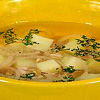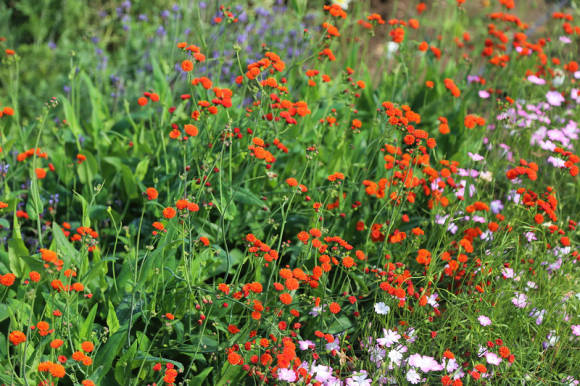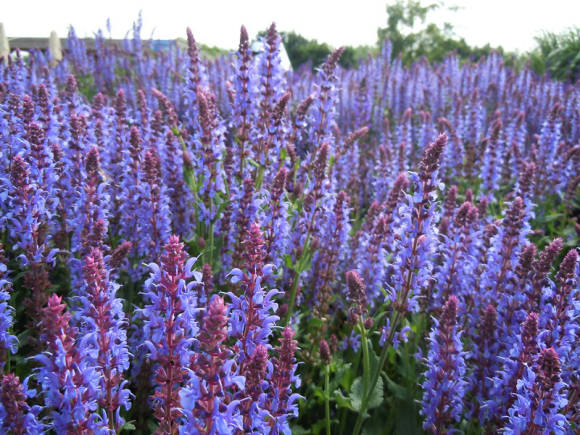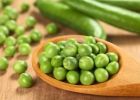
Everyone knows green peas - a vegetable culture and a wonderful delicacy that can be sated both separately and by adding green peas to salads or other dishes. Green peas are good and loved because they do not contain many calories, but enrich the human body with necessary substances. The plant itself is universal - after it, most vegetable crops can be grown, and when incorporating organic matter left over after harvesting, vegetable peas are able to enrich the soil with nitrogen available to plants, make it looser, moisture and breathable.
We select a site
In order to get a really good harvest of green peas, you need to choose the right soil for growing them. Ideally, plots with soil, which is loam or sandy loam, are allocated for peas. But green peas grow quite well, grow and give decent yields on chernozem soils.
Garden bed preparation
You need to start preparing the bed where early potatoes, onions or garlic grew before, you should not sow peas in the area where peas have already grown, it is better to wait a couple of years, then it can be returned to its original place. It is also undesirable to place green peas where beans, clover or beans were previously grown.
It is better to start cooking a bed for peas in the autumn, this is the best option. During this period, it must be dug up onto a full bayonet of a shovel with the obligatory removal of the maximum amount of weeds and plant debris (certainly with roots), after which 3-4 kg of well-rotted manure or humus, 20-25 g of sulfate should be laid out for each square meter of soil potassium and 20-30 g of superphosphate and dig up the soil again, again trying to select all weeds if they appear.
Sowing peas

Before sowing, the seeds of green peas should be soaked for a day in a cloth soaked in water or, much better, in any stimulator of growth activity such as Epin, Zircon and the like. Sowing swollen pea seeds can be done quite early - already at the end of April, and if the month is warm and spring started early, then it can be done in the middle of the month.
The seeding depth of peas mostly depends on the type of soil, its structure and moisture content. For example, on light sandy or sandy loam soils, green peas can be planted to a depth of 8 cm, on medium soils, the maximum depth should be 6 cm, and on heavy soils, not exceed 4 cm.If you plan to grow green peas in the country, where you are not very often, and there is a possibility that the plants will lack moisture, then you can safely add another centimeter of depth to these values.
For trouble-free further care of seedlings and adult plants, green peas need to be sown in rows, with a distance of 15 cm between them and a distance between the peas, and, therefore, in the future, between plants equal to 5 cm.If you plan to grow varieties that differ in late ripening and being tall, the distance between rows can be increased up to 20 cm, and between plants in a row - up to 7 cm.
Further care

With enough heat and moisture, green peas, as a rule, spring up very well, this is not a crop with which there can be problems, and further care is not difficult, but it should still be produced correctly, otherwise the harvest will be, but not at all the same as you expect.
Care includes loosening the soil, watering, weed control, fertilizing, and mulching with humus to retain moisture, if necessary.
Weeding and loosening the soil... Loosening for peas is very important, the soil must be constantly maintained in a loose state so that the air and water exchange of the soil is not disturbed.If the top layer is loose, then green pea plants will receive a sufficient amount of moisture and nutrients dissolved in it, nodule bacteria located on the roots of peas will develop more actively, therefore, more nitrogen will be supplied to the plants, and the yield will be higher.
Loosening is best combined with watering and weed control. It is advisable to loosen the soil at least once a week, and preferably twice a week. It is necessary to loosen the soil carefully so as not to damage the seedlings and rather fragile pea plants. It is advisable to loosen the soil in the second half of the day, when there is less moisture in the green parts of the plants and they are not as fragile as in the first half of the day. The same applies to the removal of weeds, weeding should be done in the afternoon, preferably in the late afternoon.
Watering... Many summer residents complain that peas do not grow well and grow poorly, but it turns out that the reason is more than banal and lies precisely in the lack of moisture in the soil. Peas are very jealous of moisture, and if there is a heat, and there is not enough moisture in the soil, the plants can quickly shed most of the buds and even ovaries, and you will lose up to 85% of the potential yield. Peas should be watered every week, spending 2 buckets of water for each square meter, if it is dry and hot, a bucket of water if it rained a little, and half a bucket if it rained heavily. Watering can be omitted for a week if there were two heavy rains during this time.
Watering can be done until the beginning of the formation of the beans, then they can be minimized and only make sure that the soil does not dry out too much. If you grow peas in the country, where you may not be in the period when it is time to harvest, then, so that the peas do not overripe, watering, on the contrary, can be continued at the same rate, then the moisture in the soil will prevent the peas from overripening, slowing down their ripening.
Top dressing... They are also important for those looking for a full harvest of green peas. So, for example, despite the fact that peas have nodule bacteria, nitrogen still needs to be added in the first half of the season, once, sprinkling about 10 g of urea on a square meter of soil (it can be dissolved in water). During the budding period, green pea plants really need phosphorus fertilizers, for example, potassium monophosphate in dissolved form, in the amount of 1 tablespoon per 10 liters of water.
On poor soils, a week after the application of phosphorus-potassium fertilizers, green pea plants can be used for so-called foliar feeding. To do this, it is best to take a complex fertilizer, for example, nitroammophoska, in the amount of 1 tablespoon per bucket of water, dissolve it well in water, fill it with a sprayer, and process the plants in the evening, trying to wet the entire above-ground mass.
Collecting green peas
If you do everything right, the harvest will be good and it will be a pleasure to harvest it. Usually, picking the beans starts at the bottom and is carried out at intervals of 2 days. Harvesting beans is best in the morning or evening. The harvested crop is stored for no more than a week in beans, and separately - no more than 24 hours.
Do not forget that peas in themselves are an excellent organic fertilizer, therefore, after harvesting the entire crop, it is useful to embed plant residues into the soil by digging.









